Ten global companies to spearhead construction and infrastructure for 450mm computer chip fabs, further positioning New York as leader in design of advanced manufacturing facilities.
Jun 28th, 2013
Read more
The assay is able to detect lower levels of the virus than current tests, and is easy to transport and use in remote regions.
Jun 28th, 2013
Read more
A new method for creating thin films of diamonds may allow manufacturers to enhance future electronics.
Jun 28th, 2013
Read more
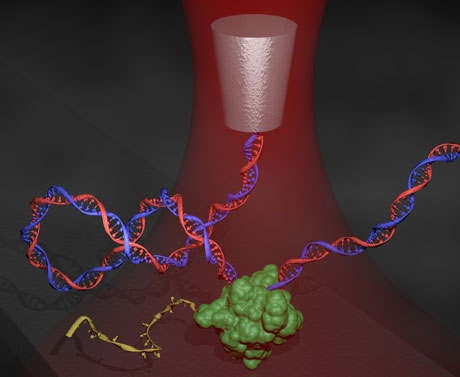 Using an instrument called an angular optical trap, researchers have reported direct measurements of the torque generated by the motor protein, E. coli RNA polymerase, as it traverses supercoiled DNA. Their technique may be used to examine the broader impacts of torque and DNA supercoiling associated with other motor proteins, and lend new insights into the gene transcription process.
Using an instrument called an angular optical trap, researchers have reported direct measurements of the torque generated by the motor protein, E. coli RNA polymerase, as it traverses supercoiled DNA. Their technique may be used to examine the broader impacts of torque and DNA supercoiling associated with other motor proteins, and lend new insights into the gene transcription process.
Jun 27th, 2013
Read more
Indium tin oxide has become a standard material in light-emitting diodes, flat panel plasma displays, electronic ink and other applications, but it is rare and expensive. Now, researchers from Arizona State University report creating a sturdy, transparent, and indium-free electrode from silver and titanium dioxide.
Jun 27th, 2013
Read more
In a new study, a 'bioadhesive' coating developed at Brown University significantly improved the intestinal absorption into the bloodstream of nanoparticles that someday could carry protein drugs such as insulin. Such a step is necessary for drugs taken by mouth, rather than injected directly into the blood.
Jun 27th, 2013
Read more
 Microscale method requires so little energy that it can run on a store-bought battery.
Microscale method requires so little energy that it can run on a store-bought battery.
Jun 27th, 2013
Read more
Researchers discover way to use iron as catalyst for widely used chemical process, replacing heavy metals.
Jun 27th, 2013
Read more
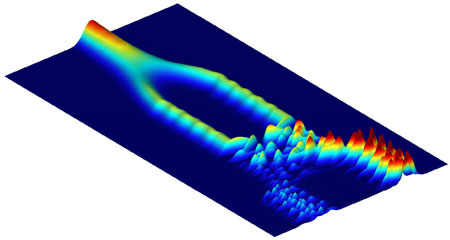 The principle of interferometry is often used in high precision measurements: A beam is split in two parts, which then interfere, yielding intricat interference patterns, from which very precise data can be obtained. Usually, this is done with photons or small massive particles such as electrons or neutrons. At the Vienna University of Technology, an interferometer has now been built which instead uses Bose-Einstein-condensates, consisting of hundreds of atoms.
The principle of interferometry is often used in high precision measurements: A beam is split in two parts, which then interfere, yielding intricat interference patterns, from which very precise data can be obtained. Usually, this is done with photons or small massive particles such as electrons or neutrons. At the Vienna University of Technology, an interferometer has now been built which instead uses Bose-Einstein-condensates, consisting of hundreds of atoms.
Jun 27th, 2013
Read more
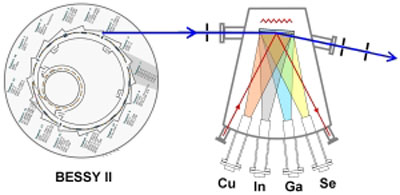 For the first time, researchers have managed to observe growth of high-efficiency chalcopyrite thin film solar cells in real time and to study the formation and degradation of defects that compromise efficiency.
For the first time, researchers have managed to observe growth of high-efficiency chalcopyrite thin film solar cells in real time and to study the formation and degradation of defects that compromise efficiency.
Jun 27th, 2013
Read more
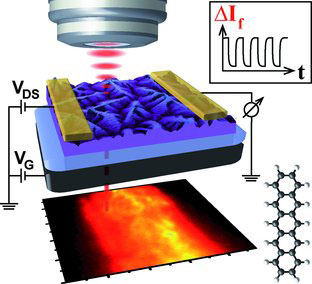 Researchers at Ludwig-Maximilians-Universitaet (LMU) in Munich have developed a new method for visualizing material defects in thin-film solar cells.
Researchers at Ludwig-Maximilians-Universitaet (LMU) in Munich have developed a new method for visualizing material defects in thin-film solar cells.
Jun 27th, 2013
Read more
The antibacterial effects of silver are well established. Now, researchers at Yonsei University in Seoul, Republic of Korea, have developed a technique to coat glass with a layer of silver ions that can prevent growth of pathogenic bacteria including Escherichia coli, Salmonella typhimurium and Campylobacter jejuni. The technology could be used to protect medical equipment and be particularly useful for applications in disaster recovery and the military environment.
Jun 27th, 2013
Read more
 Konnyaku-like electrolytes with high ionic conductivity and cationic transference number.
Konnyaku-like electrolytes with high ionic conductivity and cationic transference number.
Jun 27th, 2013
Read more
Super-strong wires made from carbon nanotubes, which could significantly improve the efficiency with which electricity is supplied across the UK have been developed in a usable form for the first time.
Jun 27th, 2013
Read more
Knowing how enzymes work is key to control the chemical processes involving these biological macromolecules that have countless applications in the fields of medicine and industry. Computational chemistry has enabled to draw for the first time the enzymes 'cartographic map' during the catalysis process, including the moment when they are at the point of maximum energy on the way from reactants to products that takes only a femtosecond.
Jun 27th, 2013
Read more
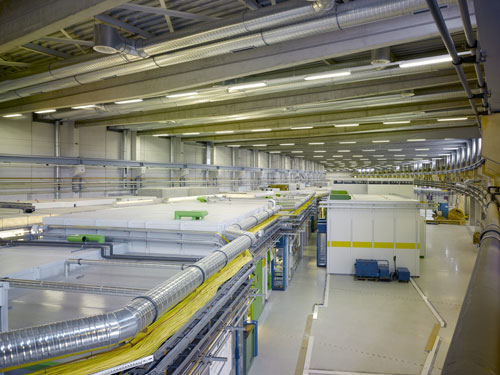 Physikerinnen und Physiker der Christian-Albrechts-Universit�t zu Kiel (CAU) haben rund zwei Millionen Euro f�r drei Verbundprojekte am Deutschen Elektronen-Synchrotron (DESY) in Hamburg eingeworben. Mit den F�rdergeldern des Bundesministeriums f�r Bildung und Forschung (BMBF) wollen die Wissenschaftlerinnen und Wissenschaftler weltweit einzigartige Hochleistungsinstrumente f�r Experimente mit brillanter R�ntgenstrahlung entwickeln.
Physikerinnen und Physiker der Christian-Albrechts-Universit�t zu Kiel (CAU) haben rund zwei Millionen Euro f�r drei Verbundprojekte am Deutschen Elektronen-Synchrotron (DESY) in Hamburg eingeworben. Mit den F�rdergeldern des Bundesministeriums f�r Bildung und Forschung (BMBF) wollen die Wissenschaftlerinnen und Wissenschaftler weltweit einzigartige Hochleistungsinstrumente f�r Experimente mit brillanter R�ntgenstrahlung entwickeln.
Jun 27th, 2013
Read more








 Subscribe to our Nanotechnology News feed
Subscribe to our Nanotechnology News feed